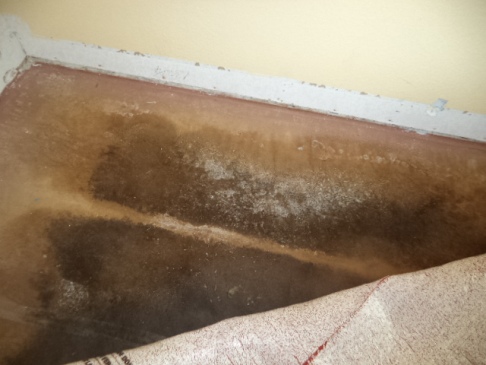A/C Mold Removal Providers
Residential A/C Mold Removal Solutions
A Plus Enviro-Services residential duct and vent cleansing experts are qualified and trained in residential duct cleaning and HEATING AND COOLING system mold cleansing and remediation. We provide specialized property HEATING AND COOLING duct and vent cleansing, mold remediation, and other cleaning services. Our mission is to provide affordable, instructional, sincere, regional and high quality aid to our residential clients by enhancing their indoor air mold and asbestos testing near me quality, energy effectiveness, and security. Did you understand air-borne pollutants are pulled into the duct every time the heating and cooling system runs. In time, these contaminants increase inside the ductwork, forming a perfect breeding place for mold, bacteria, fungi, and other microbes.
How We Do It
The existence of microbial development (mold) in a HVAC system is a common problem and a range of aspects can contribute to the microbial development. The HVAC system, including piping and drain pans, can be sources of microbial growth. An elevated mold condition can trigger many different negative effects with the most common problem being allergic reaction symptoms. The products brand-new is that usually mold contamination in HEATING AND COOLING systems and air vents are confined to little areas.
Cleaning is usually not extremely complicated. Do not waste your money with unqualified business and fraudsters. Call us for a complimentary and instructional price quote today. Strong Acid Water Sanitizer A Plus Enviro-Services makes use of a strong acidic water as a sanitizing agent since it's organic, totally safe for humans, animals, and the environment. This strong Acidic Water is an electrolytic water with electrical potential, which implies that its chemical decomposition is produced by passing an electrical current through a liquid or service consisting of ions. This consists of the hypochlorous acid (SDS) generated from an anode when electrolysis happens. It is made by using an electrolysis enhancer to tap water, this in itself is not a chemical.
Strong Acidic Water 2.5 pH works as an antifungal, anti-bacterial, and an antiviral representative. This water kills bacteria within approximately 30 seconds, and because of this the water is stronger than popular disinfectants and it has multi-purpose usage. Strong Acidic water was approved for disinfecting food in June 2002, in accordance with the Food Health Law, under the name hypochlorous acid water.
Learn More Why Choose Us A Plus Enviro Solutions Inc. DBA Air Duct Cleansing Plus is totally accredited, bonded and guaranteed. What our customers are saying We can highly advise them as a super friendly and expert specialist who assisted us greatly with a current examination of our house's air duct/vent system.
Indoor mold Wikipedia

Fungal development that develops on damp materials Indoor mold on the head jamb of the window in a multi-storey structure. Mold (American English) or mould (British English), likewise in some cases described as mildew, is a fungal development that establishes on wet materials. Mold is a natural part of the environment and plays a vital part in nature by breaking down dead organic matter such as fallen leaves and dead trees; inside your home, mold growth ought to be avoided. Mold recreate by ways of tiny spores. The spores are like seeds, but undetectable to the naked eye, that float through the air and deposit on surface areas. When the temperature level, moisture, and offered nutrient conditions are appropriate, the spores can form into brand-new mold colonies where they are transferred.
Direct exposure to high levels of mycotoxins can result in neurological issues and death. Prolonged exposure (for instance, day-to-day exposure) can be particularly harmful. Mycotoxins can continue the indoor environment even after death of the fungi. They can comply with dust particles and can spread through the air connected to these dust particles or spores. [3] There must be extremely specific temperature and humidity conditions in order https://en.wikipedia.org/wiki/?search=Mold inspection for fungis to produce mycotoxins.
Symptoms [modify] Symptoms of mold direct exposure may consist of nasal and sinus congestion; runny nose, eye irritation; itchy, red, watery eyes, breathing problems, such as wheezing and trouble breathing, chest tightness, cough, throat inflammation, skin inflammation (such as a rash), headache, and relentless sneezing.
Immune-compromised individuals and individuals with persistent lung diseases, such as obstructive lung disease, might get serious infections in their lungs when they are exposed to mold. These individuals should keep away from locations that are most likely to have mold, such as compost piles, cut lawn, and wooded areas.
Asthma [edit] Infants might develop breathing symptoms as an outcome of exposure to Penicillium, a fungal genus. Signs of mold-related respiratory problems in an infant include a relentless cough or wheeze. Increased direct exposure increases the probability of developing breathing symptoms throughout the very first year of life. Research studies have actually shown a correlation between the probability of developing asthma and exposure to Penicillium.
Causes and growing conditions [edit] Mold is found all over and can grow on nearly any compound when moisture is present. They replicate by spores, which are carried by air currents. When spores arrive on a moist surface area appropriate for life, they begin to grow. Mold is normally found inside at levels which do not affect most healthy individuals. Because common building products are capable of sustaining mold development and mold spores are ubiquitous, mold growth in an indoor environment is usually related to water or moisture direct exposure and may be brought on by insufficient drying of floor covering materials (such as concrete). Flooding, dripping roofs, building-maintenance or indoor-plumbing problems can result in interior mold growth. Water vapor commonly condenses on surfaces cooler than the moisture-laden air, making it possible for mold to grow. [citation required] This wetness vapor goes through walls and ceilings, normally condensing during the winter in environments with a long heating season. Floorings over crawl spaces and basements, without vapor barriers or with dirt floorings, are mold-prone. The "doormat test" detects moisture from concrete slabs without a sub-slab vapor barrier.